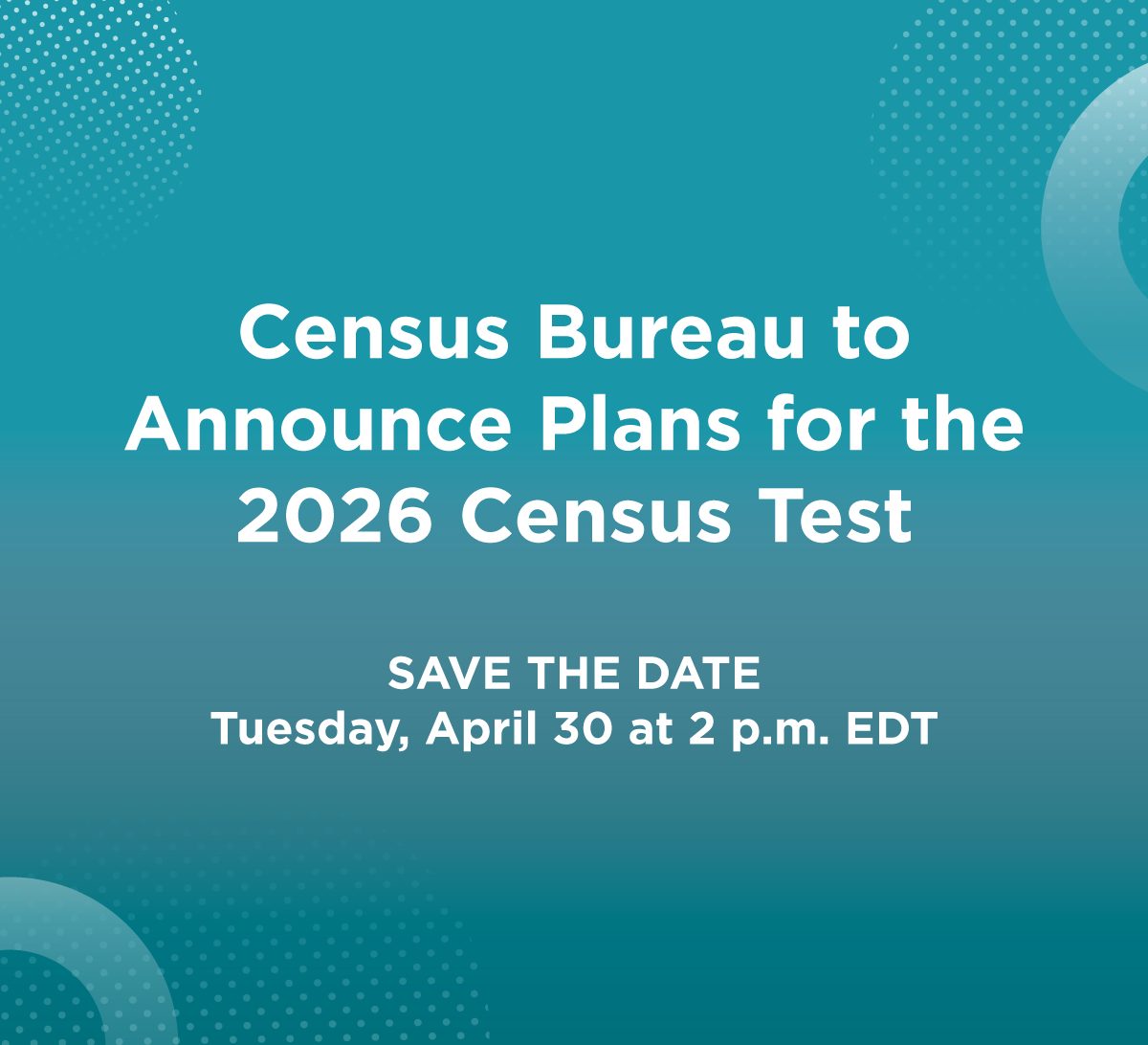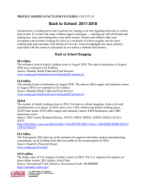Facts for Features: Back to School: 2017-2018
Summertime is winding down and vacations are coming to an end, signaling that back-to-school time is here. It’s a time that many children eagerly anticipate — catching up with old friends and making new ones, and settling into a new daily routine. Parents and children alike scan newspapers and websites looking for sales on a multitude of school supplies and the latest clothing fads and essentials. This edition of Facts for Features highlights the many statistics associated with the return to classrooms by our nation’s students and teachers.
Back-to-School Shopping
$8.5 billion
The estimated sales at family clothing stores in August 2016. The sales at bookstores in August 2016 were estimated at $1.6 billion.
Source:
$1.6 billion
The estimated sales at bookstores in August 2016. The sales at office supply and stationery stores in August 2016 were estimated at $1.5 billion.
Source:
28,910
The number of family clothing stores in 2015. For back-to-school shopping, choices of retail establishments were plenty. In 2015, there were 7,185 children and infants clothing stores; 25,027 shoe stores; 6,475 office supply and stationery stores; 6,870 bookstores; and 7,885 department stores.
Source:
$3.2 billion
The third quarter 2016 after tax profit estimates for apparel and leather product manufacturing corporations, up $1.6 billion from after tax profits in the second quarter of 2016.
Source:
$12.8 million
The dollar value of U.S. imports of rubber erasers in 2016. The U.S. imported the majority of these rubber erasers, $9.2 million, from China.
Source:
$2.3 million
The dollar value of U.S. exports of rubber erasers in 2016. Most of these U.S. exports of rubber erasers, $1.0 million, went to Mexico.
Source:
$247.7 million
The dollar value of U.S. imports of binders and folders in 2016. More than half of these imports, $139.0 million, came from China.
Source:
$35.0 million
The dollar value of U.S. exports of binders and folders in 2016. The majority of these exports of binders and folders, $24.1 million, went to Canada.
Source:
Students
77.1 million
The number of children and adults enrolled in school throughout the country in October 2015 — from nursery school to college. They comprised 25.3 percent of the entire population age 3 and older.
Source:
Schools
$89.4 billion
The estimated dollar value of private and public educational construction in 2016.
Source:
Pre-K through 12 Enrollment
48.5 million
Fall enrollment for elementary and secondary public school systems in 2014.
Source:
$11,392
The amount of current spending per pupil for elementary and secondary public school systems in the United States in 2015.
Source:
73.4%
The percentage of children 3 to 6 years old who were enrolled in school as of October 2015.
Source:
79.8%
The percentage of children ages 3 to 6 enrolled in kindergarten who attended all day, as of October 2015.
Source:
25.0%
The percentage of elementary through high school students who had at least one foreign-born parent in October 2015.
Source:
Languages
12.1 million
The number of school-age children (ages 5 to 17) who spoke a language other than English at home; 8.7 million of these children spoke Spanish at home.
Source:
Public Education Employment
11.0 million
The number of full- and part-time employees in public education in 2015. They comprised 57.0 percent of all public employees in state and local government.
Source:
Elementary and Secondary Education Employment
7.7 million
The number of full- and part-time employees in elementary and secondary public education in 2015. This includes 5.2 million full- and part-time instructional staff.
Source:
Higher Education Employment
3.2 million
The number of full- and part-time employees in higher education in 2015.
Source:
Colleges
4,788
The number of colleges, universities and professional schools in the United States in 2014. There were 1,041 junior colleges.
Source:
13.4%
The percentage of college and graduate school students age 35 and older in October 2015. They made up 29.8 percent of those attending school part time.
Source:
40.5%
The percentage of 18- to 24-year-olds enrolled in college or graduate school in 2015.
Source:
Work Status
52.1%
The percentage of students enrolled in college who worked less than full time, year-round in 2011; 19.6 percent worked full time, year-round.
Source:
3.1 million
The number of enrolled high school students who worked less than full time, year-round in 2011; 146,000 students in high school worked full time, year-round.
Source:
Field of Degree
13.9 million
The number of people age 25 and over who held a bachelor’s degree in business in 2016. Business degrees were reported by 20.3 percent of the population with a bachelor’s degree, followed by education (12.5 percent); science and engineering related fields (9.5 percent); engineering (7.8 percent); social sciences (7.6 percent); biological, agricultural and environmental sciences (6.2 percent); and liberal arts and history (4.9 percent).
Source:
74.3%
The percentage of those in 2012 who had a bachelor’s degree in science, technology, engineering or math — commonly referred to as STEM — and were not employed in STEM occupations.
Source:
Rewards of Staying in School
$87,562
The average earnings of full-time, year-round workers age 18 and older with a bachelor’s degree or higher in 2015. Those whose highest degree was a bachelor’s had mean earnings of $76,310. Mean earnings for full-time, year-round workers with a high school diploma (includes GED certificate) was $43,061, while those with less than a ninth grade education had $35,551 average earnings.
Source:
The following is a list of observances typically covered by the Census Bureau’s Facts for Features series:
| Black (African American) History Month (February) Super Bowl Valentine's Day (Feb. 14) Women's History Month (March) Irish-American Heritage Month (March)/ St. Patrick's Day (March 17) Earth Day (April 22) Asian/Pacific American Heritage Month (May) Older Americans Month (May) Mother's Day Hurricane Season Begins (June 1) Father's Day |
The Fourth of July (July 4) Anniversary of Americans With Disabilities Act (July 26) Back to School (August) Labor Day Grandparents Day Hispanic Heritage Month (Sept. 15-Oct. 15) Unmarried and Single Americans Week Halloween (Oct. 31) American Indian/Alaska Native Heritage Month (November) Veterans Day (Nov. 11) Thanksgiving Day The Holiday Season (December) |
Editor’s note: The preceding data were collected from a variety of sources and may be subject to sampling variability and other sources of error. Facts for Features are customarily released about two months before an observance in order to accommodate magazine production timelines. Questions or comments should be directed to the Census Bureau’s Public Information Office: telephone: 301-763-3030; or e-mail: pio@census.gov.












